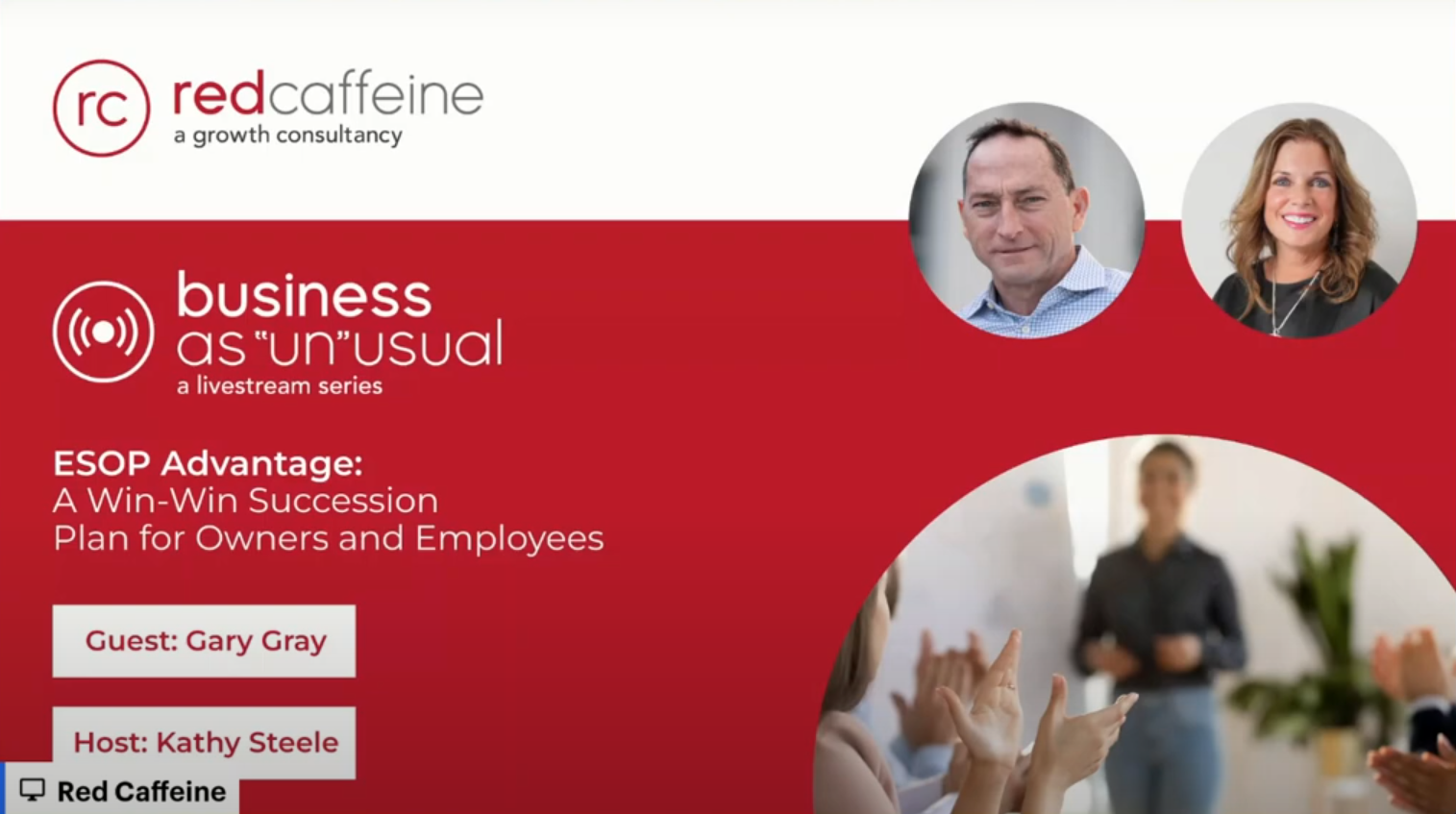Time to read: 6 minutes
How Employee Ownership Solve Succession Issues in Contracting Businesses
The Succession Challenge in Contracting
The contracting industry faces a significant succession crisis. According to a recent Construction Financial Management Association (CFMA) survey, over 50% of construction company owners plan to transition their businesses within the next decade, yet fewer than 30% have a formal succession plan in place. This gap is particularly troubling in an industry where unsuccessful transitions often lead to business failure, project disruptions, and job losses.
Contracting businesses present unique succession challenges due to their bonding requirements, project-based operations, and the specialized knowledge often concentrated in the owner. While traditional succession options like family transfers and third-party sales remain common, employee ownership plans have emerged as an increasingly popular solution, particularly well-suited to addressing the industry's specific challenges.
Why Employee Ownership Work for Contractors: The Statistical Evidence
The growth of employee-owned companies in contracting businesses is supported by compelling performance data:
According to the National Center for Employee Ownership (NCEO), the number of employee-owned contracting businesses has increased by approximately 35% over the past decade—significantly outpacing the growth rate in other industries. This trend reflects the structural advantages employee ownership offers for addressing contractor-specific succession challenges.
Industry analysis by FMI Corporation found that employee-owned contractors typically experience:
- 25% higher productivity than their non-employee-owned counterparts
- Employee turnover rates approximately 67% lower than industry averages
- Growth rates that exceed industry averages by 2-3% annually
These performance advantages directly address the continuity concerns that often complicate contractor succession planning.
How Employee Ownership Address Key Succession Challenges
Preserving Bonding Capacity Through Transition
For many contractors, bonding capacity represents their business's operational lifeblood. Traditional succession approaches often trigger surety reviews that can result in reduced bonding, limiting the company's ability to pursue projects.
Employee ownership transitions demonstrate significant advantages in maintaining bonding relationships:
Commercial Case Example: A Midwest commercial contractor with $85 million in annual revenue implemented employee ownership as their succession solution after determining that both family succession and third-party sale options would likely trigger bonding reductions. By maintaining management continuity through the employee ownership transition, the company not only preserved its existing $120 million bonding program but secured a 15% capacity increase within 18 months due to the financial strengthening that resulted from employee ownership tax benefits.
According to the Surety & Fidelity Association of America, employee-owned contractors experience approximately 20% fewer bonding capacity reductions during ownership transitions compared to companies using other succession approaches. This stability results from the gradual ownership transfer and operational continuity that employee ownership facilitates.
Retaining Key Employees During Ownership Changes
The contracting industry faces persistent workforce challenges, with skilled labor shortages consistently ranking among the top concerns in industry surveys. During ownership transitions, key employee retention becomes even more critical, as these individuals often carry client relationships, specialized technical knowledge, and project management expertise.
Employee ownership data from the construction sector demonstrates significant retention advantages:
Specialty Contractor Example: An electrical contractor with 175 employees and $32 million in revenue converted to employee ownership after experiencing the loss of several key project managers during a previously attempted management buyout. Following the transition to employee ownership, the company maintained 100% retention of key management personnel over a five-year period, compared to the industry average turnover rate of approximately 20% annually for similar positions.
A Construction Industry Institute study found that employee-owned contractors experience 67% lower management turnover compared to the industry average. This stability proves particularly valuable during succession transitions, when leadership continuity directly impacts client confidence and project performance.
Managing Financial Challenges of Succession
Contracting businesses face unique financial challenges during succession due to their capital-intensive nature, cyclical cash flows, and thin profit margins. Traditional succession approaches often strain company resources through debt burdens or cash extractions.
Employee ownership successions demonstrate financial advantages through improved cash flow and tax benefits:
Heavy Civil Example: A highway contractor generating $4.5 million in annual profit implemented 100% employee ownership as an S-Corporation, creating approximately $1.6 million in annual federal tax savings. This improved cash flow allowed the company to maintain aggressive equipment replacement schedules while simultaneously servicing the employee ownership acquisition debt—a combination that would have been financially challenging under traditional succession approaches.
According to NCEO data, employee-owned contractors typically maintain debt service coverage ratios 30-40% stronger than their non-employee-owned counterparts during succession transitions due to the combined impact of tax advantages and improved operational performance.
Maintaining Organizational Culture and Values
Contracting businesses typically develop distinct operational cultures that significantly impact quality standards, safety performance, and customer service. These cultural elements often represent valuable but intangible assets that can be lost during ownership transitions.
Employee ownership successions demonstrate advantages in cultural preservation:
Residential Builder Example: A custom homebuilder with a 40-year history of quality craftsmanship converted to employee ownership after determining that potential external buyers would likely standardize operations at the expense of the company's craftsman approach. Five years post-employee ownership implementation, the company maintained its quality positioning while increasing market share by 18% as employee-owners embraced and enhanced the cultural elements that previously depended on the founder's personal involvement.
Research by the Employee Ownership Foundation found that 76% of employee-owned companies report strengthened organizational culture following employee ownership implementation, compared to only 14% of companies using other succession approaches.
Employee Ownership Across Different Contracting Sectors
The effectiveness of employee ownership varies somewhat across contracting sectors:
Commercial General Contractors
Commercial contractors have implemented employee ownership with particularly strong results, experiencing:
- Enhanced bonding capacity through improved financial performance
- Strengthened client relationships through management continuity
- Competitive advantages in talent recruitment and retention
According to FMI data, employee-owned commercial contractors typically achieve profit margins 1.5-2% higher than industry averages and grow market share approximately 15% faster than their non-employee-owned counterparts.
Specialty Trade Contractors
Specialty contractors (electrical, mechanical, plumbing) benefit from employee ownership through:
- Retention of technically skilled employees who gain ownership stakes
- Preservation of specialized knowledge and capabilities
- Enhanced service continuity for maintenance clients
Industry analysis indicates that employee-owned specialty contractors retain technically certified employees at nearly twice the rate of their non-employee-owned competitors, creating significant competitive advantages in capability-driven sectors.
Heavy Civil/Infrastructure Contractors
Infrastructure and civil contractors leverage employee ownership to address:
- Equipment-intensive capital requirements through tax-advantaged cash flow
- Multi-year project continuity concerns during ownership transitions
- Technical knowledge transmission across workforce generations
Employee-owned civil contractors typically maintain equipment replacement rates 20-30% higher than industry averages while carrying approximately 15% less debt—a combination that enhances competitive positioning and operational capacity.
Implementation Keys for Successful Contractor Employee Ownership
While employee ownership offers significant succession advantages, successful implementation requires attention to several contractor-specific factors:
- Transition Timing: Most successful employee ownership transitions begin implementation 3-5 years before the owner's desired exit, allowing for gradual leadership transition while maintaining surety relationships.
- Financial Structure: Effective employee ownership plans balance fair value for selling owners with sustainable financial structures that accommodate the industry's cyclical nature.
- Management Development: Successful employee ownership transitions include deliberate development of next-generation leadership, often beginning 5+ years before ownership transfer.
Conclusion: The Employee Ownership Succession Advantage
For contracting business owners facing succession challenges, employee ownership offers a proven solution that addresses industry-specific concerns while providing financial and operational advantages. The statistical evidence and case examples demonstrate that employee ownership can effectively preserve business continuity, maintain bonding capacity, retain key employees, and enhance financial performance—creating succession outcomes that benefit owners, employees, and clients alike.
As the contracting industry's succession challenges continue to grow, converting to employee ownership represents an increasingly valuable option worth careful consideration by forward-thinking owners seeking to protect both their legacy and their company's future.
How to get started
Getting started with an Employee Stock Ownership Plan (ESOP) can transform your contracting business, unlocking potential for growth and ensuring lasting value for everyone involved. At ESOP for Contractors, we understand the intricacies of the process, from assessing your company's current status to designing a tailored ESOP that aligns with your goals.
Our leadership team knows firsthand how to create winning strategies that benefit both owners and team members alike. If you're curious about how an ESOP could enhance your business's future, we invite you to reach out for a free consultation. Let’s explore how we can help you achieve sustainable success together!

Gary Gray, Founder
Book a Free Consultation
Interested in a free consultation for your contracting business? Send us a message - We’re here to help.
Thank you for contacting us! We’ve received your message and will get back to you as soon as possible. If you need immediate assistance please call us at 404-849-0244.
Please try again later















